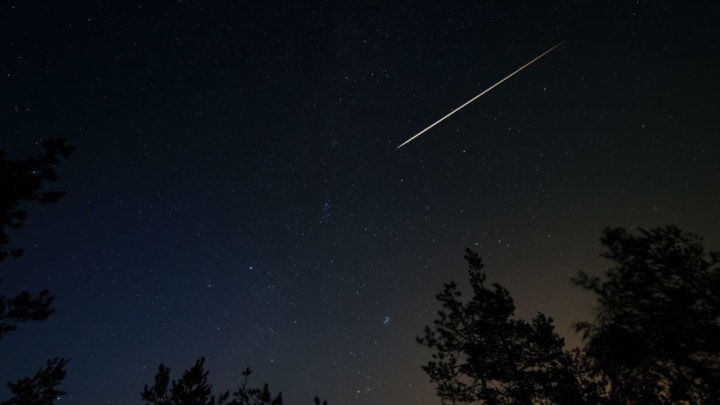This week, you have two phenomenal opportunities to see a meteor shower light up the night sky. Here's how to catch a glimpse of the Draconids and Southern Taurids.
When to See the Draconid Meteor Shower
First up is the Draconid shower, which happens annually when Earth crosses the orbit of Comet21P/Giacobini-Zinner, and the comet's debris transforms into meteors when it hits Earth’s atmosphere. Draconid refers to the appearance of the meteors near the head of the constellation Draco the dragon. According to EarthSky, the shower is also sometimes referred to as the Giacobinids—after Michel Giacobini, who discovered the comet in 1900.
The shower will peak Tuesday, October 8, into the following morning, and your best chance to spot a few meteors is right at nightfall. USA Today reports that since the meteors will be competing with the light from the moon, you should focus your gaze on an empty patch of sky.
When Comet21P/Giacobini-Zinner reaches its closest point to the sun, or perihelion, the number of meteors can sometimes reach the hundreds or even thousands. Since its most recent perihelion was just last year—and its next one won’t come until 2025—EarthSky predicts that this year’s orbital intersection will produce just about five meteors per hour.
When to See the Southern Taurid Meteor Shower
If you miss the Draconids’ display on Tuesday night, you can try again on Wednesday at nightfall with the Southern Taurids. Although the Taurids—referring to their proximity to the constellation Taurus—won’t likely amount to many more meteors per hour than the Draconids, the meteors themselves might be more noticeable. According to the American Meteor Society, the Taurids are “rich in fireballs,” which are such large, brilliant meteors that they can even cast shadows on the ground.
And, if the meteors manage to escape your line of sight altogether this week, don’t worry: The Orionid meteor shower is on its way later this month, followed by the Leonids in November and the Geminids in December.
[h/t USA Today]
